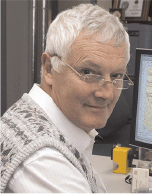Petroleum implications of the REI09 2D Reconnaissance Survey, Reinga/Northland Basin, northwest New Zealand
F. Bache A , V. Stagpoole A and C. Uruski BA GNS Science.
B OMV New Zealand.
The APPEA Journal 52(2) 702-702 https://doi.org/10.1071/AJ11116
Published: 2012
Abstract
The Reinga/Northland Basin is located offshore northwest of New Zealand, adjacent to the petroleum producing Taranaki Basin. Water depths range from shelfal to more than 2,000 m. Analysis of a large multichannel 2D seismic-reflection dataset, tied to Taranaki Basin, constrains seismic stratigraphic units and unconformities formed during successive deformational events in the region. Five phases are identified.
Phase one: extension that created major northwest-trending structures. The age of the graben-filling sediments is inferred to be Jurassic and/or Cretaceous. Source rocks are interpreted to have been deposited widely during this phase.
Phase two: Late Cretaceous to Late Eocene regional subsidence with increasing marine influence in the Reinga region. Source and reservoir successions are inferred to have been deposited during this interval.
Phase three: Late Eocene compression resulted in folding of the northwest Reinga region.
Phase four: Oligocene to Early Miocene regional subsidence and emplacement of the Northern Allochthon and eruption of the Northland Volcanic Arc in earliest Miocene time. The Early Miocene deformation and volcanism relate to development of the subduction zone to the northeast of the basin. Reservoir facies were deposited in regions affected by deformation and seal facies were deposited in distal regions.
Phase five: From the mid-Miocene to the present day subsidence continued in the Reinga Basin with deposition of pelagic sediments. Uplift of the Wanganella Ridge, in the northwest part of the Reinga region in the Middle Miocene and intermittent deformation in the northeast through to Pliocene time resulted in localised deposition of channel and fan reservoir facies.

Francois Bache is a research geologist in the marine geosciences department at GNS Science. He has an MSc (geology) from the University of Lille, France, and a PhD (marine geology) from the University of Brest/IFREMER/CNRS, France. He specialises in seismic stratigraphy and has published various topics and geographical areas, including the Mediterranean Basin, Sultanate of Oman, Bolivia, and NW New Zealand. He manages the GNS Science regional structure and tectonic history of Zealandia Project where he has worked since 2010. His interests include passive margins formation, subduction initiation, formation, and evolution of sedimentary basins and petroleum implications. |

Vaughan Stagpoole is the head of the marine geoscience department at GNS Science. He is a geophysicist specialising in research about the formation and development of sedimentary basins and about basin modelling. Recently, he has been involved in assessing the prospectivity of New Zealand’s frontier sedimentary basins and the New Zealand Law of the Sea project. He has a PhD from Victoria University of Wellington. |

Chris Uruski ran the Frontier Petroleum Basins project for GNS Science for the last six years, but is now moving to OMV New Zealand as new ventures team leader. He still thinks there is a lot of oil and gas yet to be found around New Zealand. |
References
Bache, F., Sutherland, R., Stagpoole, V., Herzer, R., Collot, J., and Rouillard, P., 2012—Stratigraphy of the southern Norfolk Ridge and the Reinga Basin: a record of initiation of Tonga-Kermadec-Northland subduction in the southwest Pacific. Earth and Planetary Science Letters 321–22(1 March), 41–53.Herzer, R. (1995). Seismic stratigraphy of a buried volcanic arc, Northland, New Zealand and implications for Neogene subduction. Marine and Petroleum Geology 12, 511–31.
King, P.R., and Thrasher, G.P., 1996—Cretaceous-Cenozoic geology and petroleum systems of the Taranaki Basin, New Zealand. Institute of Geological & Nuclear Sciences monograph 13. 243 p, 6 enclosures. Institute of Geological & Nuclear Sciences Limited, Lower Hutt, New Zealand.
Stagpoole, V.M. (2011). Two-way time-depth relationship for the Waka Nui-1 well to aid geological interpretations of the offshore northwestern New Zealand. New Zealand Journal of Geology and Geophysics 54, 341–46.
Uruski, C.I. (2010). New Zealand’s deepwater frontier. Marine and Petroleum Geology 27, 005–26.
Uruski, C.I., Reid, E., Stagpoole, V.M., Herzer, R.H., Griffin, A.G., Bland, K.J., Ilg, B.R., and Browne, G.H. (2010). The Reinga Basin, North Island, New Zealand. APPEA Journal 50, 287–308.


